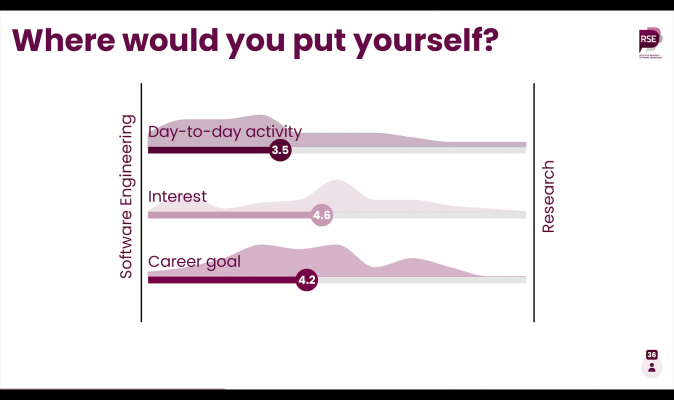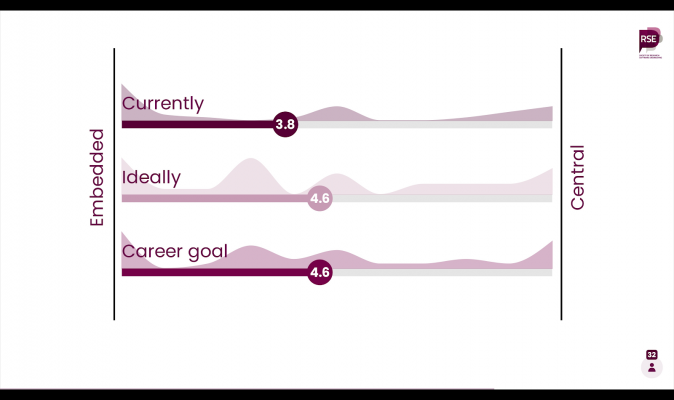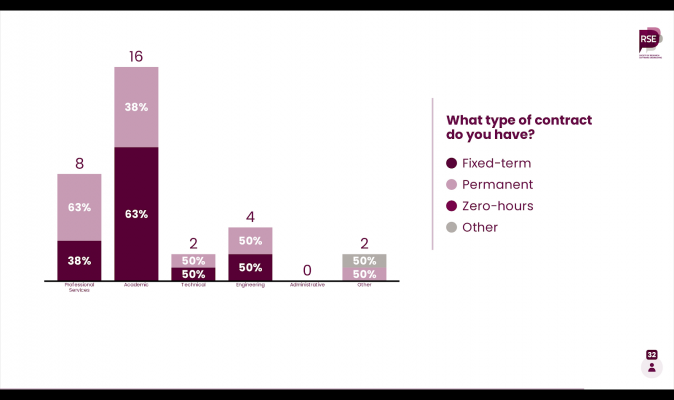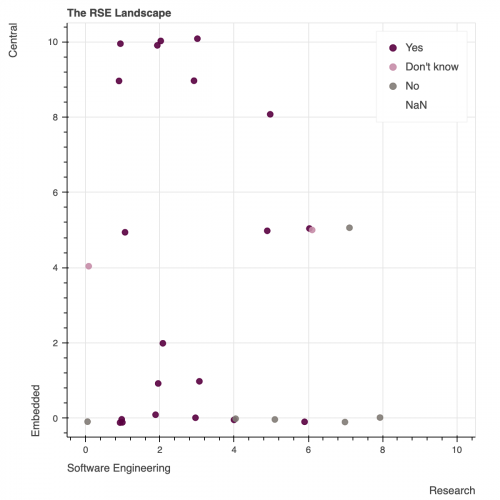The RSE landscape
Posted on 10 June 2021
The RSE landscape
By Teri Forey, Society of Research Software Engineering trustee.
Originally posted on the RSE Society blog.
Software is integral to research, yet those whose job it is to create and maintain that software can come from a variety of places and can follow very different career paths. As the Society of Research Software Engineering our aim is to form an inclusive and diverse community, which represents and supports the everyone that works to develop research software. As part of that we want to discover what the full range of different RSE roles are, and how we can help to support those different career paths.
To progress this goal, we held a mini-workshop on “The RSE Landscape - what is your RSE type, and how do you want to develop it?” at the SSI Collaborations Workshop 2021 (CW21) on 30 March. The session was chaired by Kirsty Pringle, co-chaired by Clem Hadfield and featured contributions from five trustees: Teri, Marion, James, Paul and Ania. We present here a summary of the outcomes and what further actions the Society will be making on the back of this mini-workshop.
We ran the initial session with 25 attendees each completing a Mentimeter interactive survey. We then shared the link with other CW21 attendees on 31 March, gaining an additional 14 responses. As well as answering the survey, we asked participants to give us feedback on the questions being asked, all of which will help us improve any further events or surveys related to RSE types and role diversity.
The session started with each of the trustees giving a short statement on their RSE type, introducing the attendees to a range of different roles and setting the scene for the questions we then asked. The first of which was whether the participants would consider themselves to be an RSE, and only 23 of the 36 responders said they would. This suggests that CW21 had a relatively broad audience and we were likely interacting with people outside of the traditional RSE community and so might be exposed to RSE roles we had not previously considered.
We then introduced the concept of the software engineering vs research spectrum, an axis that is often used to describe RSEs as sitting in the middle of the two concepts with a focus on both software and research. We asked people where they would place themselves on this scale, and interestingly the responders day-to-day activity was skewed towards software engineering. However, the participants interest and career goals were more centrally located between the two concepts, although there is a peak in interest in software engineering.

We then asked questions related to where people work, and saw a fairly even split between those in an RSE group (11) and those not in an RSE group (10). This divide was further demonstrated when we asked people to place themselves on a scale between “embedded” and “central”, we clarified this to mean how close people were placed to those using the software for those not in an academic context. This showed a separation into three clear peaks when people considered their current position, although there was a slightly wider spread of responses when asked about their ideal position and career goal. This demonstrates the wide range of RSE roles, that most RSEs are not in a central RSE group, nor that they all want to be.

We also asked about people’s current contract and although we saw a relatively even split between those on a fixed-term contract (16) and those on a permanent contract (17); we did discover (perhaps unsurprisingly) that those on an academic career path are more likely to be fixed-term than those in professional-services.

We lastly asked participants about what support they would like to see from the Society, and got a range of open text responses. Several respondents said that they would like more support on creating and funding an RSE group, which might suggest we should run another iteration of the Aspiring Leaders Workshop. We also got a lot of requests for mentoring, which is encouraging since we are in the process of setting up a Society mentorship program. There were also a number of other suggested ways the Society could support its members, all of which are being further analysed and passed on to the appropriate subgroups of Society trustees.
Since running the workshop the RSE Role Diversity subgroup of trustees, that is Marion, Teri, Kirsty and Claire, have started analysing the results. For example, we’ve taken the two spectrums of “Software engineering vs Research” and “Embedded vs Central” to place the attendees on a graph, which we’ve then coloured according to whether they consider themselves an RSE. This suggests that people that do not consider themselves to be an RSE tend to be embedded although they are spread across the “Software engineering vs Research” spectrum.

Although we’ll continue to analyse this data it is clear we would benefit from asking these kinds of questions to more members of the community, and so we’ll be generating an interactive application with questions on RSE types that we hope to make available soon. This will incorporate everything we’ve learnt from the CW21 mini-workshop and will let participants get immediate feedback on where they sit within a graph similar to the above and how their RSE role compares to others. We’d also like to run a longer event on the RSE landscape and role diversity to further explore this topic, so keep an eye out for that coming later this year!
